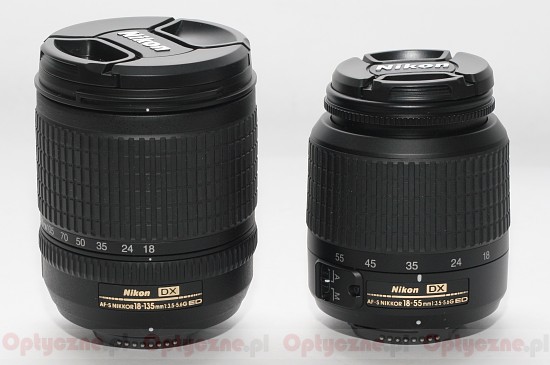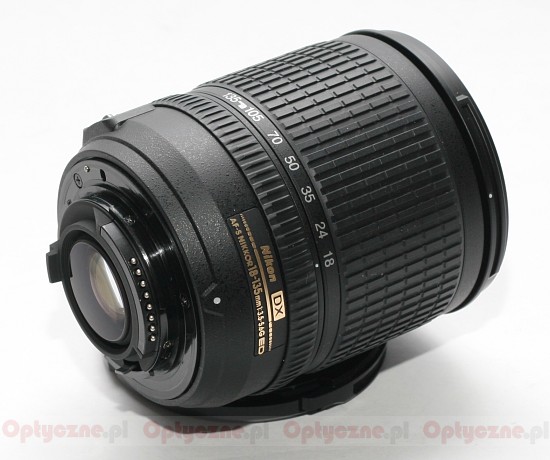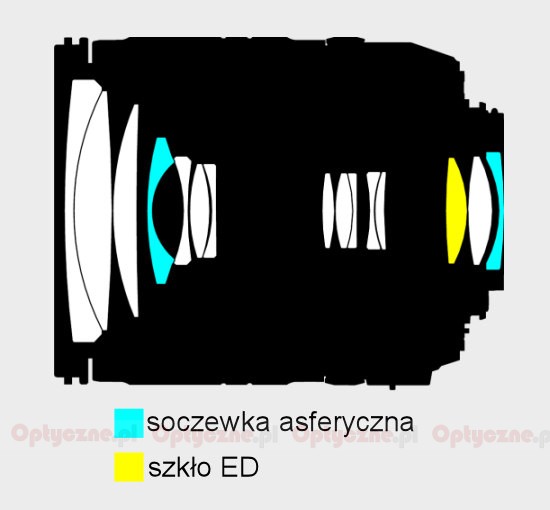Nikon Nikkor AF-S DX 18-135 mm f/3.5-5.6G ED-IF
3. Build quality

Nikon used a plastic bayonet instead of a metal one, thus influencing the weight significantly. Unfortunately, this is not the only drawback of simplifying the build of this lens. The manual focusing ring is simply a major disaster. It is much narrower than the 18-70 mm's and it does not have a scale on it. To manually adjust the sharpness successfully you almost need a miracle. The ring moves loosely and even a slight touch makes the whole ring move. After a while the looseness dissipates, but the user still does not know if this was just the ring's looseness or already a change in focal length. To sum it up, the 18-135 mm manual sharpness adjustment is a real challenge...
Please Support UsIf you enjoy our reviews and articles, and you want us to continue our work please, support our website by donating through PayPal. The funds are going to be used for paying our editorial team, renting servers, and equipping our testing studio; only that way we will be able to continue providing you interesting content for free. |
- - - - - - - - - - - - - - - - - - - - - - - - - - - - - - - - - - - - - - - - - - - - - - - -

The front lens can extend to a full 135 mm focal length, reaching a full 15 centimeters in length. The problem is that the lens barrel is so long and made of an average quality plastic that it is not stable. When grabbing the edge of the lens and moving it a bit we can feel no resistance, and we see the front lens swinging somewhat. We are sure that the looseness has a big influence on off axis optical aberration.
The Nikkor 18-135 mm has 15 elements set up in 13 groups. It has one ED ultra low dispersion lens and two hybrid aspheric lenses, which guarantee good picture quality by reducing such flaws as chromatic aberration, astigmatism and coma.







